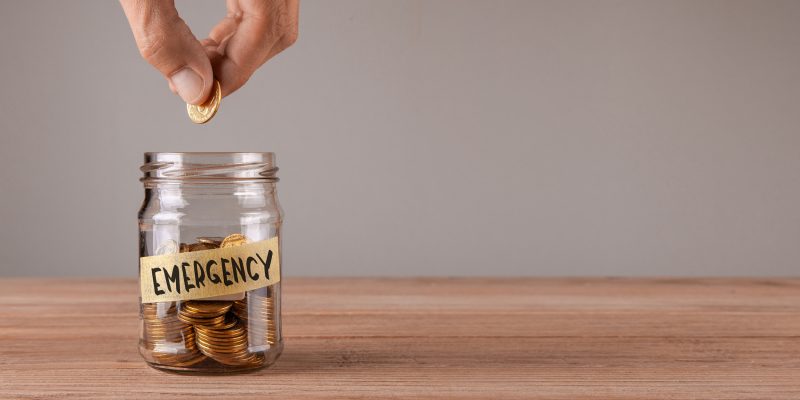HOW TO CREATE AN EMERGENCY FUND AND KEEP IT SAFE

It can be easy to take things for granted in today’s booming job market. And while it seems like jobs are available for the taking today, that situation can change at any time. That’s why it’s essential to be ready for a rainy day by creating an emergency fund.
Most experts recommend having three to six months’ salary on hand. While the thought of saving that much can be daunting, it doesn’t have to be.
Here are some tips on making it happen.
Start small
You don’t have to eat the whole elephant in one bite. If you have lots of debt, start with a small emergency fund. Save $500 to $1000, enough to help avoid reaching for the credit card if an unexpected bill pops up. The goal at this point is simply to avoid going further into debt.
Make a budget and a savings goal
Determine how much you need to save and when you want to have it ready. Be realistic about timelines and base them on your current income.
If you have a spouse and both of you earn reliable income, three months of expenses should be enough. However, if you are the sole source of income in your household, six months of savings is a safer bet.
Now for the most critical part, creating a budget. A budget is the only way to control your money and save effectively.
There are some excellent budget guides out there, but the basic idea is the same for all of them.
First, list all your expenses, including debts.
Next, prioritize each expense. Take care of your future first. Put in the amount you decided earlier based on your savings goal and timeline. Then, take care of fundamentals like housing, food, clothing, and transportation.
Finally, address non-essential items like entertainment and eating out. It may take some sacrifice to pay yourself first. You may have to skip vacations and meals out. It can be challenging to sustain that kind of discipline, so automate your routine to make it easier.
Set up direct deposit for your emergency fund to go into a designated saving account before you get the chance to spend it. You can also auto pay essential bills to make they are taken care of before the non-essential items.
Also, it’s important to remember that the emergency fund is for just that, emergencies. Lost jobs, unexpected medical bills, or unplanned vehicle repairs are emergencies. Going on vacation is not.
Write down what the emergency fund can be used for and stick to that plan.
Save windfalls
It might be tempting to take windfalls like tax refunds and spend them. But saving them toward your emergency fund means you’ll reach your goal sooner, and that will free up money in your budget to have fun.
And while we are talking about ways to speed up the saving process, try looking for deals at banks. Some offer hundreds of dollars in bonus cash to start a new account.
Keep it safe
It’s tempting to invest your money in something like stocks or cryptocurrency, but this is not a good idea when saving for a rainy day.
Investing can be risky, and the worst thing you can do is lose money in your emergency fund. The best course of action is to leave it in a high-yield savings account. Think of your emergency fund as an insurance policy, not an investment.
Accounting for inflation is important, though. So keep an eye on your budget and add to your emergency fund as needed.
Creating an emergency fund is no simple task. It takes hard work, discipline, and commitment, but the payoff is worth it to secure your financial future. With a plan, a budget, and the right attitude, you’ll be ready to ride out just about any economic storm.